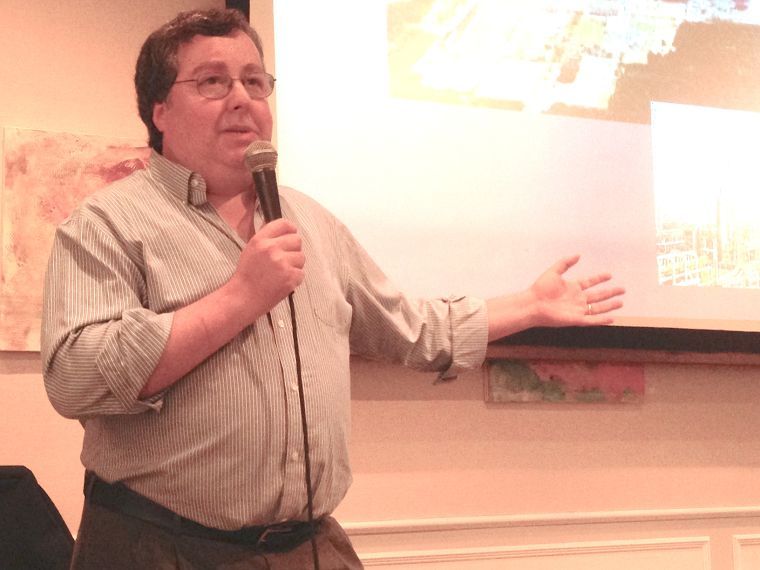Dan Fagin’s Pulitzer Prize-winning 2013 book, “Toms River: A Story of Science and Salvation,” is more than the tale of a New Jersey community rocked by the emergence of major chemical companies, he told an audience at the Bryant Library on Wednesday.
It’s also a story of epidemiology, chronicling the many theories speculating on the connection between pollution caused by the chemical companies in the latter half of the 20th century and the spike in child cancer cases within the community that prompted a federal investigation, the New York University science journalism professor said.
“Through this book I’m trying to understand and explain what’s going on and what we can conclude,” said Fagin, who prior to joining NYU’s faculty in 2005 covered the environment for 15 years at Newsday.
“Throughout history people have seen patterns and tried to figure out what they mean and often have made huge progress, even without knowing for sure, whether environmental exposure ‘A’ caused disease ‘B,’” he said. “But simply by using common sense and some basic mathematics, [people] have been able to make those connections with confidence, but not certainty.”
Fagin worked on the book off and on since 2005, his interest in the subject having piqued while writing about the commonalities in Long Island’s breast cancer rates while at Newsday, he said. As his research into Toms River grew, Fagin said he began looking at similar epidemiological issues all over the world.
“The idea is to prevent more Toms Rivers, and I think it is possible that there are Toms Rivers happening right now that we don’t know about, maybe even probable,” he said. “But I think it’s quite possible for that kind of improved awareness to make things better, to reduce the odds and prevent this kind of tragedy from happening again.”
Residents greeted the Swiss company Ciba when in 1952 it opened a dye-manufacturing plant, Toms River Chemical Corporation, and created jobs for low-income and middle class-families, Fagin said.
But the corporation produced nearly twice as much in waste as it did product, and Fagin said Toms River’s sandy soil meant for more frequent and convenient dumping.
In the mid 1960s, Ciba made a “secret agreement,” Fagin said, to build a pipeline directly to the Atlantic Ocean to dispose of its waste, while continuing to expand by employing upwards of 4,000 residents a decade later.
It was around this time, he said, that residents – notably children – began getting sick in waves. Residents questioned public officials, but they denied any connection between exposure to contaminated water and illness.
“There’s a lot of [denial] in cancer epidemiology, too,” Fagin said. “We think there’s something going on in Toms River, but is there really something going on in Toms River? Are we assuming because we see a lot of dots, there’s got to be some reasoning? Not everyone agreed that this was for real.”
Tom’s River residents weren’t the only ones who noticed the community’s cancer trends. Nurses in Philadelphia, where many of the patients were treated, were also quick to question the impact of the area’s environmental factors, Fagin said.
By 1995, Lisa Boornazian, a nurse at the Children’s Hospital of Philadelphia, sought the help of her sister-in-law, Laura Janson, who happened to work for the Environmental Protection Agency and knew the proper channels to contact.
The federal government intervened. The people of Toms River were right, Fagin said.
“As much as epidemiology can tell us, there was indeed a cluster of child cancer in Toms River that was indeed caused by excessive consumption of contaminated water and also breathing air from down in the chemical plant,” he said. “That never happens, that kind of conclusion is very rare. These kinds of studies are almost never done.”



